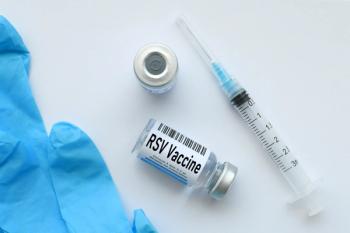
Uptake of Pneumococcal Vaccine Low Both Before and After Hospitalization for IPD Among Hong Kong Cohort
Key Takeaways
- Pneumococcal vaccination rates were low among hospitalized patients in Hong Kong, with many missed opportunities in clinical settings.
- The study spanned 2015-2024, highlighting the need for improved vaccination strategies, especially post discharge.
Low uptake of vaccination to protect against invasive pneumococcal disease (IPD) was observed both before and after a pneumococcal-related hospitalization, with countless missed vaccination opportunities documented.
Among patients hospitalized for pneumococcal disease in Hong Kong, investigators found low uptake of pneumococcal vaccination before hospitalization and suboptimal rates following discharge, with numerous missed vaccination opportunities in inpatient and outpatient settings, according to findings from a follow-up study published in Vaccines.1
Pneumococcal disease presents a global burden, especially for children and older adults. Invasive pneumococcal disease (IPD), defined as an infection with Streptococcus pneumoniae, is especially common in these populations, but vaccination with a pneumococcal conjugate vaccine (PCV) helps prevent serious illness. Unfortunately, vaccine coverage among eligible adults is lacking; in 2022, coverage among eligible adults with risk factors for IPD was only 23.0%, and 64.0% for those 65 years or older.2,3
There is a lack of data on pneumococcal vaccination rates among individuals who have previously had a pneumococcal infection. One study in adults 18 years or older with IPD found that 1 or more missed opportunities for vaccination were documented across nearly all evaluated unvaccinated individuals. Most patients visited their primary care provider multiple times across the study period, typically in a critical setting where patients can encounter a variety of diverse interventions to encourage them to receive a vaccination. There is also a lack of reporting on the uptake of pneumococcal vaccines as a secondary prevention, occurring after a hospitalization.4,5
Elucidating research gaps can prove helpful toward developing more effective pneumococcal vaccination campaigns and ensuring optimal protection for more patients. The study investigators utilized electronic inpatient health records from Hong Kong to investigate pneumococcal vaccine uptake in a cohort of patients with pneumococcal infections from 2015 to 2024—the study duration was chosen to account for the vast fluctuation in cases during the COVID-19 pandemic. Vaccination uptake was assessed before and after hospitalization for pneumococcal infection and across time periods before, during, and after the pandemic.1,2
Baseline (January 2015 to December 2019), COVID-19 pandemic (January 2020 to December 2022), and postpandemic (January 2023 to August 2024) periods were determined for analysis and covered the 13-valent PCV (PCV13), 15-valent PCV (PCV15), and 23-valent polysaccharide pneumococcal vaccine (23vPPV). To assess the correlation between pneumococcal vaccination status and attendance frequency, investigators grouped the number of clinic visits and hospitalizations into categories: 1 to 5 times, 6 to 10 times, and more than 10 times. If a patient eligible for vaccination did not receive one after they visited a clinic or were admitted to the hospital, it was classified as a missed vaccination opportunity.1
The cohort utilized for the analysis was based on a previously published study population of patients with pneumococcal infection who required hospitalization. Among the total population (5517 patients), 4469 (81%) were deemed eligible for pneumococcal vaccination. The uptake rate of any dose of a pneumococcal vaccine before developing pneumococcal disease was 16.8% among all the patients and 20.5% among only those eligible. After accounting for deaths due to pneumococcal infection, 76.5% of patients discharged from the hospital were eligible for vaccination (3356/4387).1
Patient follow-up occurred over a median of 1.85 years. According to the investigators, the percentage of eligible patients receiving pneumococcal vaccinations shortly after discharge from the hospital was low. These percentages ranged from 2.4% to 5.7% in the baseline period, 0.5% to 2.1% in the COVID-19 period, and 0.8% to 4.5% in the post-COVID-19 period for time points within the initial 12 months. Overall pneumococcal vaccination uptake rate increased only slightly post discharge; crucially, the full vaccination uptake rate only increased from 8.1% to 9.8%.1
A vast majority (93.8%; 5174/5517) of patients hospitalized for pneumococcal infection previously received medical care in a public hospital, and 92.5% of this segment had visited outpatient clinics. Surviving patients sought medical care in public hospitals in droves following their hospitalization, yet many experienced at least 1 subsequent hospitalization. The data highlight the numerous missed vaccination opportunities for these patients and demonstrate a need for more thorough interventions to increase vaccine uptake.1
“To our knowledge, this is the first study to explore missed opportunities of pneumococcal vaccinations post recovery from pneumococcal disease,” the study authors concluded. “These findings are crucial in guiding the selection of pneumococcal conjugate vaccine formulations and improving vaccination strategies.”1
REFERENCES
1. Chan KF, Ma T, Ho JC, et al. Pneumococcal vaccine uptake in adults before and after hospitalization for pneumococcal infections in Hong Kong, 2015 to 2024. Vaccines. 2025;13(5):541. doi:10.3390/vaccines13050541
2. Drijkoningen JJC, Rohde GGU. Pneumococcal infection in adults: Burden of disease. Clin Microbiol Infect. 2013;20(s5):45-51. doi:10.1111/1469-0691.12461
3. Halpern L. Targeted screening tools can increase pneumococcal vaccine uptake in health system retail pharmacies. Pharmacy Times. June 5, 2025. Accessed June 10, 2025. https://www.pharmacytimes.com/view/targeted-screening-tools-can-increase-pneumococcal-vaccine-uptake-in-health-system-retail-pharmacies
4. Kway MH, Greene CM, Schaffner W, et al. Adults with invasive pneumococcal disease: Missed opportunities for vaccination. Amer Journ Prevent Med. 2006;31(4):286-292. doi:10.1016/j.ampre.2006.06.007
5. Halpern L. Diverse interventions found to increase pneumococcal vaccine uptake among older adults in primary care settings. Pharmacy Times. May 23, 2025. Accessed June 10, 2025. https://www.pharmacytimes.com/view/diverse-interventions-found-to-increase-pneumococcal-vaccine-uptake-among-older-adults-in-primary-care-settings
Newsletter
Stay informed on drug updates, treatment guidelines, and pharmacy practice trends—subscribe to Pharmacy Times for weekly clinical insights.










































































































































































































